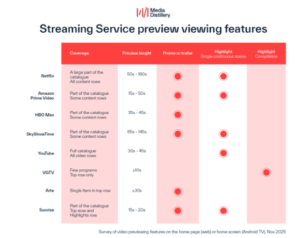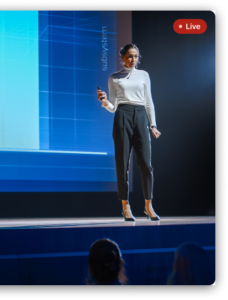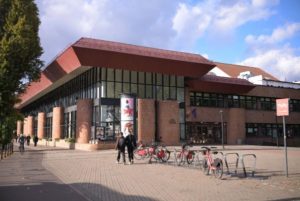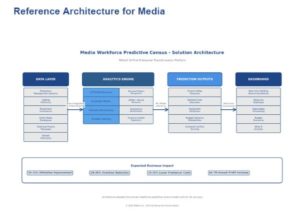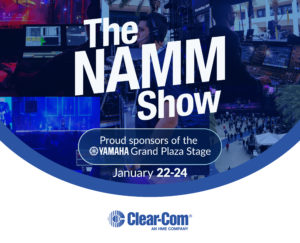BBC and Neutral Wireless
BaM Award® – Project, Collaboration or event

At this year’s NAB Show in Las Vegas, the IABM BaM Award for “Best Project, collaboration, event or other innovation” was presented to an ambitious project led by broadcaster The BBC and Scottish software-defined radio company Neutral Wireless. The project deployed the “world’s largest pop-up multi-cell private 5G network” outside Buckingham Palace and along The Mall to Admiralty Arch to support international live media contributions during the Coronation of Their Majesties King Charles III and Queen Camilla.
Wireless camera feeds are an integral source of video content for programme making. Remote contributions regularly use bonded-cellular video encoders that encode and distribute a high-definition video feed across multiple public mobile networks, reducing the required resources and adapting to network conditions on each path. In high demand density environments with many devices all competing for resources, the public networks can become saturated and unable to sustain the required bitrates. This was experienced by The BBC and other broadcasters during the funeral of H.M. Queen Elizabeth II, preventing them from broadcasting their planned content, and was anticipated to be a problem for the Coronation.
 BBC News and BBC R&D approached Neutral Wireless to explore the possibility of deploying a network to support remote video and radio contribution workflows during the Coronation. Initial viability testing was performed with LiveU on the banks of Loch Lomond in Scotland, before onsite tests and RF surveys outside Buckingham Palace. BBC recognised that other broadcasters would face the same connectivity issues and opened the network to a coalition of domestic and international broadcasters.
BBC News and BBC R&D approached Neutral Wireless to explore the possibility of deploying a network to support remote video and radio contribution workflows during the Coronation. Initial viability testing was performed with LiveU on the banks of Loch Lomond in Scotland, before onsite tests and RF surveys outside Buckingham Palace. BBC recognised that other broadcasters would face the same connectivity issues and opened the network to a coalition of domestic and international broadcasters.
When Coronation Day arrived and the public networks became congested by 100,000s of spectators, the 7-cell private network deployed by Neutral Wireless supported over 60 devices from 20 international broadcast outlets with over 1 Gbps of uplink connectivity. News teams were able to go live when they otherwise could not, and with no change to their workflow.
In addition, a second single-cell network configured for low latency was also deployed outside the Palace to support low latency UHD testing by BBC R&D and Sony.
At the heart of the project was a Neutral Wireless Private 5G Standalone Network operating in n77 under a shared access licence from the UK regulator, Ofcom. The Lomond “Network-in-a-box” (NIB) provides an entire single-cell pop-up private 5G network in a portable 4U wheeled case, and has been deployed at sporting events and at Edinburgh Airport for the final departure of H.M. Queen Elizabeth II from Scotland.
 For larger, more flexible networks, the company offers disaggregated systems with multiple cells and configurations. The system deployed for the Coronation featured a 5G core and 4 gNBs (including redundancy) to drive 7 radio-heads with high-gain sector antennas. The flexible software-defined system and intuitive user interface allowed for rapid reconfiguration, including uplink-bias to provide increased uplink capacity required by broadcasters to support multiple (U)HD video feeds.
For larger, more flexible networks, the company offers disaggregated systems with multiple cells and configurations. The system deployed for the Coronation featured a 5G core and 4 gNBs (including redundancy) to drive 7 radio-heads with high-gain sector antennas. The flexible software-defined system and intuitive user interface allowed for rapid reconfiguration, including uplink-bias to provide increased uplink capacity required by broadcasters to support multiple (U)HD video feeds.
The ambitious and innovative project was aided and supported by various manufacturers including LiveU, Haivision, Sony, Amarisoft, AW2S, and Alpha Wireless, and has now been recognised by numerous broadcast awards, including an International Broadcasting Convention (IBC) Innovation Award for Content Creation, a Technical Paper Award, and, also at NAB 2024, the BEIT Conference “Best Paper” Award.
In choosing the BBC and Neutral wireless for the Project, Collaboration or Event BaM Award® winner, the judges said: “This project demonstrated the very best in technical collaboration and problem solving to meet the needs of broadcasters to solve a very real problem around access to reliable spectrum and bandwidth for important events. The detailed planning and proof of concept work was a great foundation for the live use of the technology in a real environment…a future pathway to a very agile approach in deploying non-public networks for events such as this.”
